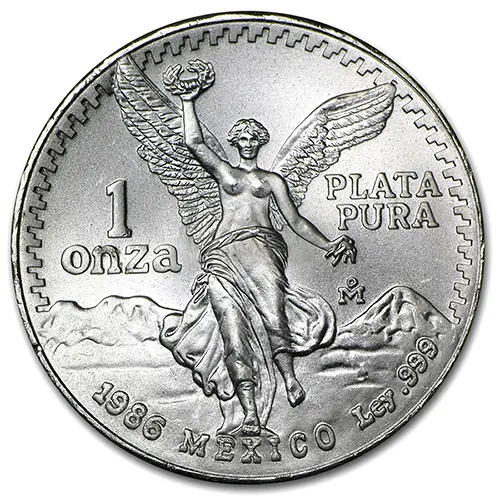Table of Contents
This blog is an in-depth analysis of the sources of China’s silver imports, their supply stability, and the factors affecting China’s silver import strategy. China is a global powerhouse when it comes to silver consumption, using this precious metal in industries ranging from jewelry to electronics. With such high demand, understanding the sources of China’s silver imports is crucial, not only for industry insiders but for anyone interested in the global silver market. In this blog, we’ll dive into the primary sources of China’s silver imports, analyze the stability of these supplies, and explore the factors that could impact future imports.
1. Australia: The Reliable Partner

Australia is one of China’s key suppliers of silver, and it’s no surprise why. The country is rich in mineral resources and has a well-developed mining industry. Australian silver is known for its high quality, making it a preferred choice for China’s silver imports.
Supply Stability: Australia’s mining and export systems are well-established, and the country maintains stable trade relations with China. This makes Australia’s silver supply one of the most reliable sources for China’s silver imports. However, like any resource, it’s subject to the fluctuations of the international market, which can impact export volumes and, consequently, China’s silver imports.
Strengths:
– High production volume
– Superior quality
– Established trade routes
Potential Risks:
Despite the stability, international market fluctuations could affect export quantities, though Australia remains a low-risk source for China’s silver imports.
2. Peru: The Silver Giant with a Few Wobbles

Peru stands as another significant source of silver for China’s silver imports, thanks to its rich mineral deposits. Peru’s silver mining industry is well-developed, making it a vital player in the global silver market. However, Peru’s silver supply to China comes with some caveats.
Supply Stability: While Peru has a mature mining industry, its silver supply is susceptible to disruptions. Political instability, economic fluctuations, and changing environmental policies can all pose risks to the steady flow of silver from Peru to China, potentially affecting China’s silver imports.
Strengths:
– Abundant resources
– Established mining infrastructure
Potential Risks:
The primary concern with Peru is the potential for policy changes and political instability, which could disrupt the supply chain. These factors make Peru a slightly less reliable source compared to Australia for China’s silver imports.
3. Mexico: A Powerhouse with Constraints

Mexico is a heavyweight in the global silver market, consistently ranking among the top producers. The country’s silver production is crucial for China’s silver imports, but there are several factors that could influence this supply.
Supply Stability: Mexico’s silver industry is influenced by a mix of factors, including global market prices, domestic policy shifts, and technological advancements in mining. While Mexico’s output is significant, these variables introduce some uncertainty into the equation, impacting the reliability of Mexico as a source for China’s silver imports.
Strengths:
– High global standing in silver production
– Large reserves
Potential Risks:
Market price volatility, policy changes, and mining technology challenges are potential disruptors that could impact the volume and consistency of Mexico’s silver exports to China, and thereby China’s silver imports.
4. Chile and Russia: Supplementary but Uncertain

Chile and Russia also contribute to China’s silver imports, albeit to a lesser extent compared to Australia, Peru, and Mexico. These countries have their own sets of challenges that affect the stability of their silver supply to China.
Supply Stability: Chile, like Peru, is rich in mineral resources, but it faces similar issues with political and economic stability. Russia, on the other hand, is a wildcard due to its complex geopolitical landscape, which can affect trade relations and resource availability, ultimately impacting China’s silver imports.
Strengths:
– Rich in resources
– Established mining sectors
Potential Risks:
Political instability, economic sanctions, and changing trade relations are significant risks that could impact silver exports from these countries, affecting China’s silver imports.
5. Diversifying the Supply Chain: China’s Strategy
Given the potential risks associated with relying heavily on a few key sources, China is actively seeking to diversify its silver import channels. This strategy involves exploring new trade partners and boosting domestic silver production and recycling to ensure the stability of China’s silver imports.
Supply Stability: By expanding its import sources and enhancing domestic capabilities, China aims to mitigate risks associated with supply disruptions. This diversified approach not only stabilizes the silver supply but also reduces dependency on any single source, strengthening the resilience of China’s silver imports.
Strengths:
– Reduced dependency on specific countries
– Increased resilience to market and political fluctuations
Potential Risks:
While diversification can enhance stability, it requires significant investment and time to develop new trade relationships and domestic production capabilities, which could initially impact China’s silver imports.
Conclusion: Navigating the Future of China’s Silver Imports
China’s silver import strategy is a balancing act that requires careful consideration of various factors, including supply stability, geopolitical risks, and market dynamics. As China continues to grow its industrial and technological sectors, the demand for silver will only increase, making the stability of China’s silver imports more crucial than ever.
To ensure a steady supply, China must continue to diversify its sources, strengthen trade relations, and invest in domestic silver production and recycling efforts. By doing so, China can safeguard its silver supply against the unpredictable nature of global markets, ensuring the long-term stability and security of China’s silver imports.
Related Links
Global Silver Mining Supply: 5 Powerful Insights and Future Outlook




